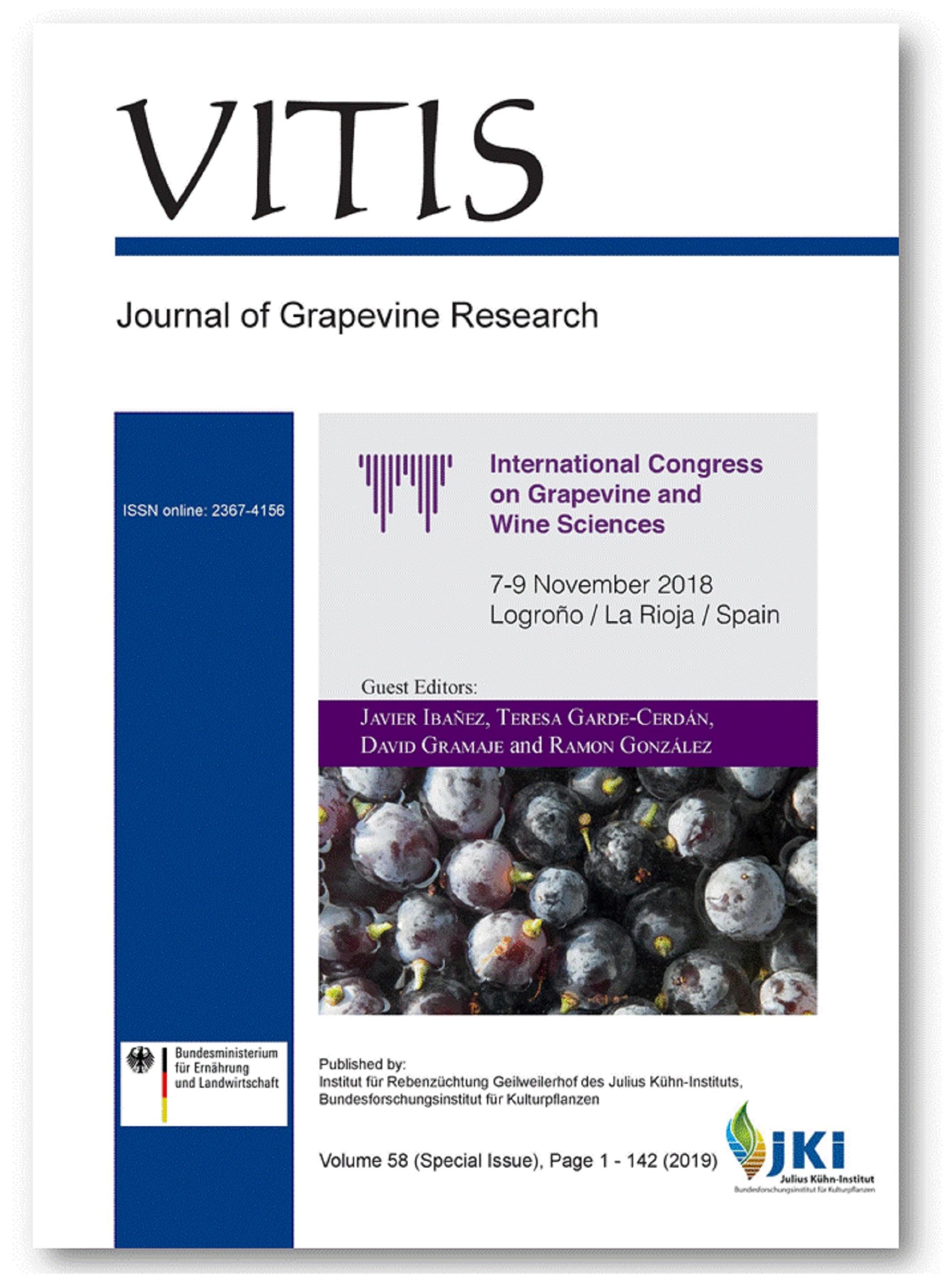Tannin content and antioxidant capacity of five Greek red grape varieties
DOI:
https://doi.org/10.5073/vitis.2019.58.special-issue.69-75Keywords:
grapes; tannins; BSA method; antioxidant capacity; DPPH; Greek winegrape varieties.Abstract
Tannins are located in skins and seeds and are responsible for important sensory and quality attributes of red grapes and wines, such as astringency, bitterness and colour stability. However, little is known regarding Greek Vitis vinifera varieties. The aim of this study is to evaluate the grape phenolic content and to present data that may contribute to the development of suitable winemaking techniques for these varieties. In this study berry attributes, skin and seed content of tannins and antioxidant capacity from five Greek Vitis vinifera varieties, namely 'Mavrotragano', 'Mandilaria', 'Kotsifali', 'Agiorgitiko' and 'Xinomavro' were analyzed.
Significant differences were observed in berry weight and the distribution of berry component mass in mature berries, among the different varieties. 'Mandilaria' and 'Kotsifali' had the heavier berries while the higher contribution of skins and seeds in berry was observed in 'Agiorgitiko' and 'Mavrotragano' grapes respectively. According to the results, the higher content of seed tannins in berries was determined in 'Mandilaria' and the lower in 'Kotsifali'. Finally, varieties with high concentrations of tannins, 'Mandilaria' and 'Mavrotragano', also demonstrated significant high values of antioxidant capacity.
Downloads
Published
Issue
Section
License
The content of VITIS is published under a Creative Commons Attribution 4.0 license. Any user is free to share and adapt (remix, transform, build upon) the content as long as the original publication is attributed (authors, title, year, journal, issue, pages) and any changes to the original are clearly labeled. We do not prohibit or charge a fee for reuse of published content. The use of general descriptive names, trade names, trademarks, and so forth in any publication herein, even if not specifically indicated, does not imply that these names are not protected by the relevant laws and regulations. The submitting author agrees to these terms on behalf of all co-authors when submitting a manuscript. Please be aware that this license cannot be revoked. All authors retain the copyright on their work and are able to enter into separate, additional contractual arrangements.



